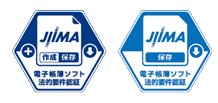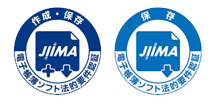Introduction
Prior to the establishment of the Act on Special Provisions concerning Preservation Methods for Books and Documents Related to National Tax Prepared by Means of Computers (Electronic Book Preservation Act) in 1998, computer-created taxation-related books and records had to be printed out and preserved in paper form. The new law enabled the preservation of such documents as electronic data, provided certain requirements were satisfied. With the revision of the law in 2005, the preservation of paper-based taxation-related documents that had been received from external parties, etc., as electronic data became possible with the use of scanners (scanner preservation) under certain provisions.
Subsequently, the requirements for scanner preservation were relaxed in 2015 and 2016. This promoted the use of scanners among business enterprises. However, to assure security for businesses adopting these systems, the Japan Image and Information Management Association (JIIMA) Certification Scheme of Scanner Preservation Software under the Electronic Book Preservation Act was launched in 2016, boosting use of this type of document preservation.
In the meantime, the National Tax Agency issued a request for notification regarding electronic preservation in 2016, asking JIIMA to foster greater awareness among users of accounting software that did not fulfill the requirements under the Electronic Book Preservation Act to not mistakenly preserve books and records in electronic format. With the tax scheme reforms that took place later in 2018, electronic tax (e-Tax) filing was to become compulsory for corporate tax filing by large business corporations starting in 2020. Furthermore, the Ministry of Finance announced its basic plans for cutting administrative procedure costs, aimed at promoting electronic tax filing among SMEs as well.
In view of these developments, JIIMA established its Certification Scheme of Electronic Accounting Software for Statutory Requirements, in awareness of the need to create and preserve taxation-related books and records properly and in accordance with the Electronic Book Preservation Act, and to give businesses a sense of security in using accounting software and electronic bookkeeping systems.
Under this scheme, commercially available software used in creating and preserving taxation-related books and records are inspected as to whether they satisfy the requirements under the Electronic Book Preservation Act and are certified when they are found satisfactory.
Objective
The functional specifications of the software compliant with the Electronic Book Preservation Act used for creating and preserving taxation-related books and records are inspected. Software that JIIMA determines as satisfactory in fulfilling the statutory requirements are certified. In this manner, corporate users of such software are able to deploy it safely without having to check into the requirements under the Act and other taxation laws on their own.
Certification Scheme
Software certification inspection is conducted by a neutral third-party body, based on the functions of the software published in its user manuals, handling instructions, etc. If it is confirmed that the software has all the necessary functions, the results are reported to the Certification Audit Committee for certification. The list of certified products is published on JIIMA website; the list of certified products also is submitted to the National Tax Agency.
Certification Logos
Products that have been certified for satisfying the statutory requirements under the Electronic Book Preservation Act bear logos similar to those below. (Choice of Type A or Type B is optional)
Type A (Pattern 1 and Pattern 2)

Type B (Pattern 1 and Pattern 2)

This certification scheme is aimed at the evaluation and verification of the functions required of electronic accounting software products under the Electronic Book Preservation Act, Ordinance for Enforcement of the Electronic Book Preservation Act, government notices, etc., and other tax laws, based strictly on product manuals, etc., and does not provide a warranty regarding any other matter.
